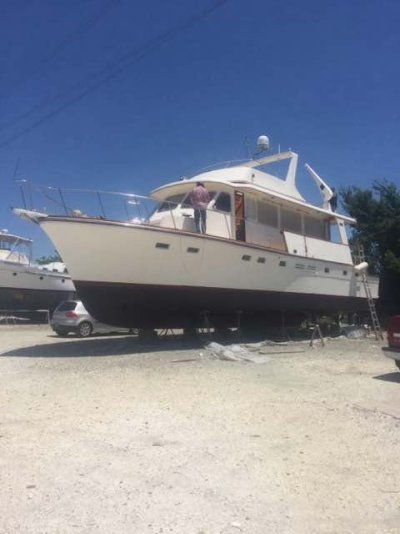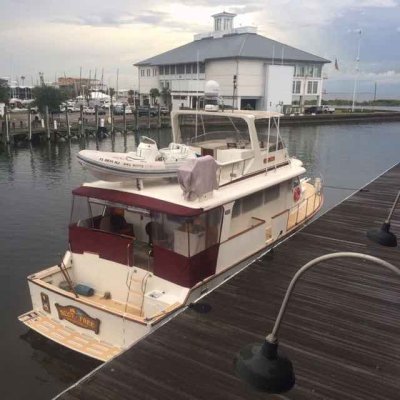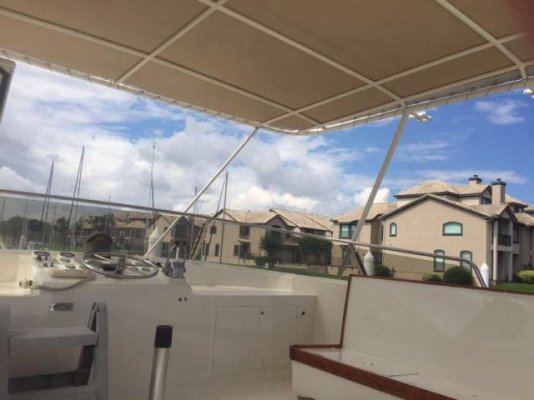I agree with Markpierce that Tom did defined his preliminary needs and for the provided advice to consider to get a boat at least a mid 30 feet in lenght.
As for the boat size, for a Loop vessel in the 28' to 36' range (for couples) is about as good as it gets. After 36' it could get much more expensive and difficult to handle. Smaller is not only more economical, it is safer and easier to handle.
It is important to keep in mind, with 'cruising couples' your vessel should always be safe and easy to handle by one person - and that one person should be the weakest person of the two.
Trawlers are very popular vessels for cruising the Great Loop. The main reason for this is they provide the most living a-board space and comfort of any boat of comparable size. If you are cruising on a budget, a small 32 - 36 foot (full displacement hull) Trawler with a small single engine offers the very best in comfort, amenities and economy. A (full-displacement hull) single engine Trawler in this size range will burn very near 1 gallon an hour. Which in my book is great comfort and economy.
Live a-board size powerboats such as Cruisers and semi-displacement hull Trawlers (and any other vessels capable of planning) as recommended by Sunchaser could be appropriate for currents and distances to cruise at the same time this will be your very most expensive vessel to take around the Great Loop which is an OK option if it fits your need.
These vessels are not designed for fuel economy, nor were they designed for slow speed. They will usually be equipped with twin engines and - for an example - a day long cruise down the Erie Canal (at 10mph) in a twin-engine 36 foot Cruiser or semi-displacement Trawler would cost you $250 a day (or possibly more) in fuel. This option is viable if it fits your needs.
Tom, you also need to plan his Loop routes depending the needed vessel's super-structure (with mast, bimini, antennas down) must be able to clear a 19' 1" fixed RR bridge in order to avoid turning the GreatLoop into a Great U-turn.
For example: If Tom's needed vessel can clear 17 feet you can cruise right through downtown Chicago.
If the vessel can clear 15' 6", Tom will have totally unrestricted cruising on the Great Loop, both in the USA and Canada including the NYS Canal System and Canada's Heritage Canals, if this is Tom's plans of course.
At the same time Tom will have to find the appropriate vessel that meet his need and his travel route plans. Like shoes, there simply is not a "one size fits all" when it comes to cruising America's Great Loop, this voyage is more about comfort, lifestyle, philosophy & pocketbook.
For example for a couple it is suggested nothing smaller than 28 feet and nothing larger than 40 feet. As something in this range should give enough for comfort, but not too big to be unsafe. 48 feet would be too big to be safe. It also starts getting to be excessively expensive and will limit your Marina options.
Tom may I recommend these links:
Loop Segments - America's Great Loop Cruisers' Association
Home - America's Great Loop Cruisers' Association
https://activecaptain.com/
Terra-Aqua Map Editor
Your Great Loop boat requirements and restrictions
Cruising and RV touring adventure stories in the USA and Canada
I hope this will help, good luck and kindest regards, Normand



